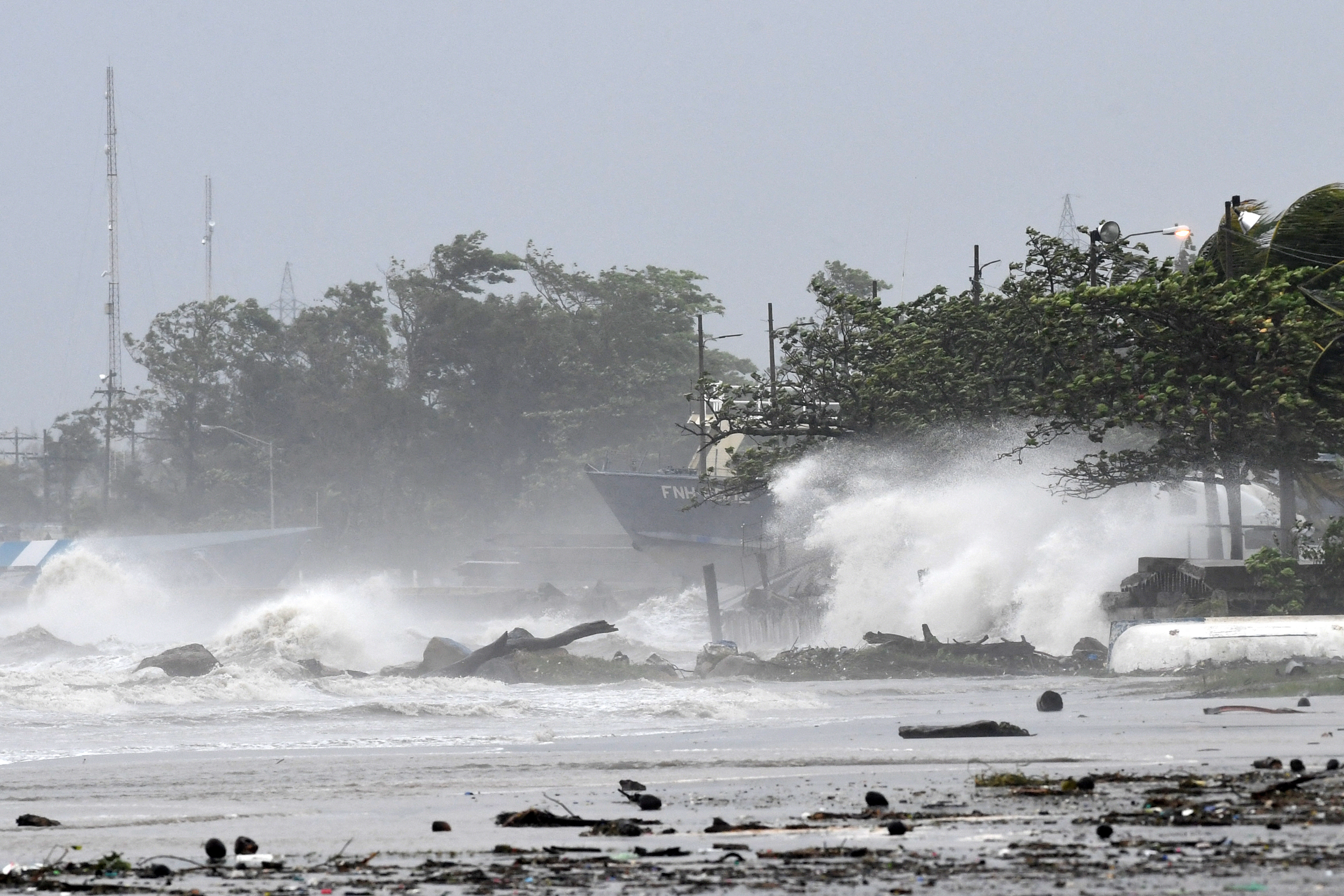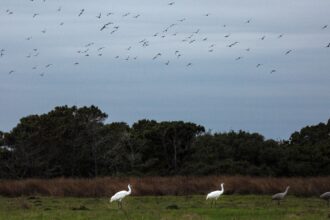A new study analyzing chemical traces in the growth rings of clam shells reinforces growing concerns about the stability of a key North Atlantic Ocean current that helps keep the global climate livable.
The findings, published on Thursday in Science Advances, examined changes in the ocean south of Greenland during the last 150 years and found that the inflow of freshwater has been disrupting the subpolar gyre, which distributes ocean heat, since the 1950s.
The research is another sign that climate heating caused mainly by fossil fuel pollution is pushing the climate toward dangerous tipping points, out of the “safe operating space” for humans, said lead author Beatriz Arellano-Nava, a University of Exeter climate researcher.
A weakening or shutdown of the subpolar gyre and related currents would weaken the northward transport of ocean heat from the tropics to higher latitudes, with different impacts by region. The tropics would experience more extreme heat on land and even worse ocean heatwaves than those already killing billions of marine organisms, from sea stars to sea birds. Sea level rise in most of the tropics would also accelerate from thermal expansion, with warming oceans swelling higher onto shorelines.
Meanwhile, there would likely be regional cooling in the North Atlantic, Arellano-Nava said, and more extremes in Europe: hotter summers, colder winters and worse flooding and droughts, as well as shifts in global precipitation patterns.
The full range of impacts is not well studied, and the intensity would depend on how much the various parts of the current system weaken. A 2024 study raised the stakes, showing that the impacts of a full-scale shutdown of the heat-carrying currents in the North Atlantic could unleash climate chaos in the Northern Hemisphere.
Several of Arellano-Nava’s recent research projects, including the new study, focus on identifying early warning signs of climate tipping points, which are basically irreversible changes to Earth’s systems such as ocean currents, glaciers, coral reefs or forests. Trying to find early warning signs is crucial because once major tipping points are breached, it’s too late to take action, she said.
The research focused on the North Atlantic Ocean southeast and southwest of Greenland, known as a subpolar gyre. There, winds drive a large, “three-dimensional circulation structure in which water is transported down into the deep ocean in a spiral,” said Anders Levermann, head of complexity science at the Potsdam Institute for Climate Impact Research.
The gyre, he said, “is a central part of the deep water formation that keeps the Atlantic Meridional Overturning Current (AMOC) running.” The AMOC is a complex system of currents that shunts warm and cold water horizontally and vertically between the Arctic and Antarctic.

Levermann was not an author on the new study, but he contributed to key tipping-point research in 2007 showing that, “theoretically, the subpolar gyre in the North Atlantic can tip from a strong state to a much weaker one, which is basically off.”
The new study confirmed these findings through an analysis of the width and chemical composition of growth rings in clams and other bivalves.
“In response to anthropogenic climate change, both systems are at risk of passing a tipping point,” the authors of the new paper wrote, noting that the collapse would weaken the northward transport of ocean heat with regional cooling in the north Atlantic, more frequent weather extremes in Europe and shifts in global precipitation patterns.
“Bivalve records are really amazing,” Arellano-Nava said. “They are like the tree rings of the sea. They offer a continuous, annually resolved record of ocean conditions.”
Varying oxygen isotopes show changes in seawater linked to temperature and the influence of different water masses, which helps show the changes in ocean circulation, she said. The width of the growth rings tells scientists about temperature, the supply of food to the seabed and circulation dynamics that bring nutrients, she added.
The changes in the rings are clear once a tipping point has been crossed, she said, explaining that during a transition to a colder climate period in the Northern Hemisphere a few hundred years ago, the shift of oxygen isotope values reflected colder conditions and a stronger influence of Arctic waters. And the growth bands became narrower, indicating both lower temperatures and reduced food availability.
Levermann, the Potsdam Institute researcher, said the new paper is remarkable because it provides direct evidence that vital ocean circulations can shift into a new state under current oceanic and atmospheric conditions, not just in a theoretical model or under vastly different ancient climate conditions.
“To find such recent evidence for tipping in a large oceanic system is worrisome and supports the increasingly large literature on tipping points from Antarctica to Greenland and the Amazon rain forest,” he said.
Tim Lenton, director of the Global Systems Institute at the University of Exeter, is a co-author of the new study and a longtime tipping points researcher. He said a collapse of deepwater formation in the subpolar gyre “could itself be seen as an early warning of a tipping point in the AMOC.”
In a paper published Wednesday in the journal Nature Geoscience, Lenton and co-authors documented destabilization toward tipping points in several other vital systems, including the Greenland ice sheet, the Amazon rainforest and the South American monsoon system.
Adding the subpolar gyre to the list means yet more potential for significant impacts to communities and ecosystems that haven’t really been examined yet, Arellano-Nava said.
“What’s the impact for food security, for how our societies are organized at the moment, because we know that a shutdown of the subpolar gyre could cause more extreme weather events in Europe and surrounding regions, and also changes in global precipitation patterns that we haven’t really studied in detail,” she said.
“The problem with tipping points is that you may not observe any noticeable changes until an abrupt transition occurs, and then it’s too late.”
About This Story
Perhaps you noticed: This story, like all the news we publish, is free to read. That’s because Inside Climate News is a 501c3 nonprofit organization. We do not charge a subscription fee, lock our news behind a paywall, or clutter our website with ads. We make our news on climate and the environment freely available to you and anyone who wants it.
That’s not all. We also share our news for free with scores of other media organizations around the country. Many of them can’t afford to do environmental journalism of their own. We’ve built bureaus from coast to coast to report local stories, collaborate with local newsrooms and co-publish articles so that this vital work is shared as widely as possible.
Two of us launched ICN in 2007. Six years later we earned a Pulitzer Prize for National Reporting, and now we run the oldest and largest dedicated climate newsroom in the nation. We tell the story in all its complexity. We hold polluters accountable. We expose environmental injustice. We debunk misinformation. We scrutinize solutions and inspire action.
Donations from readers like you fund every aspect of what we do. If you don’t already, will you support our ongoing work, our reporting on the biggest crisis facing our planet, and help us reach even more readers in more places?
Please take a moment to make a tax-deductible donation. Every one of them makes a difference.
Thank you,













